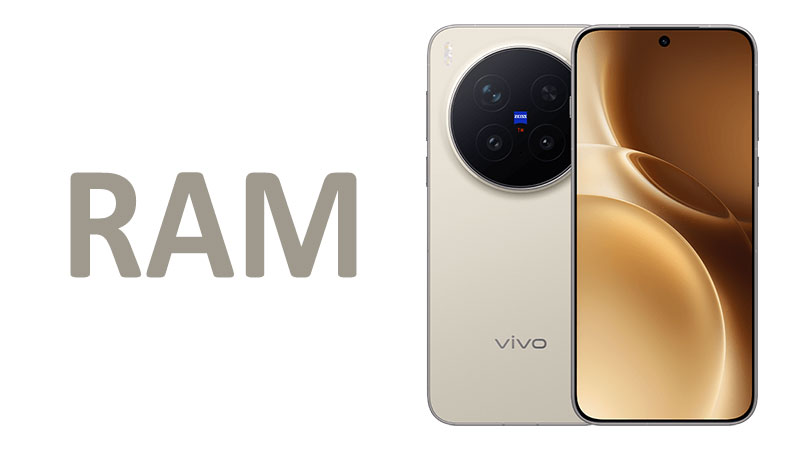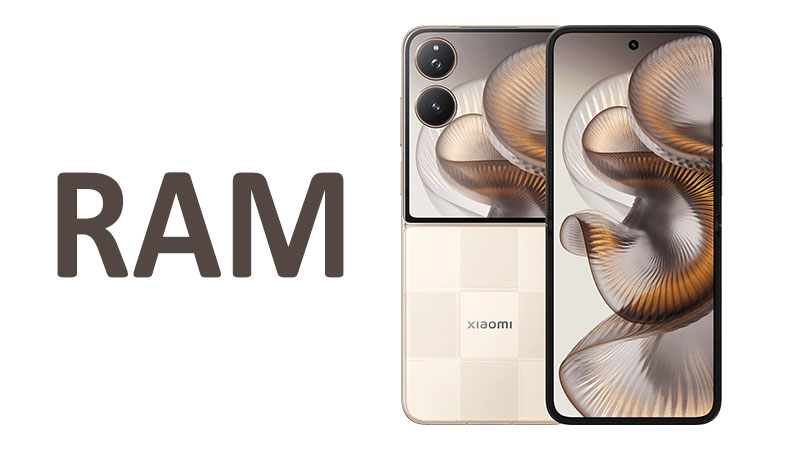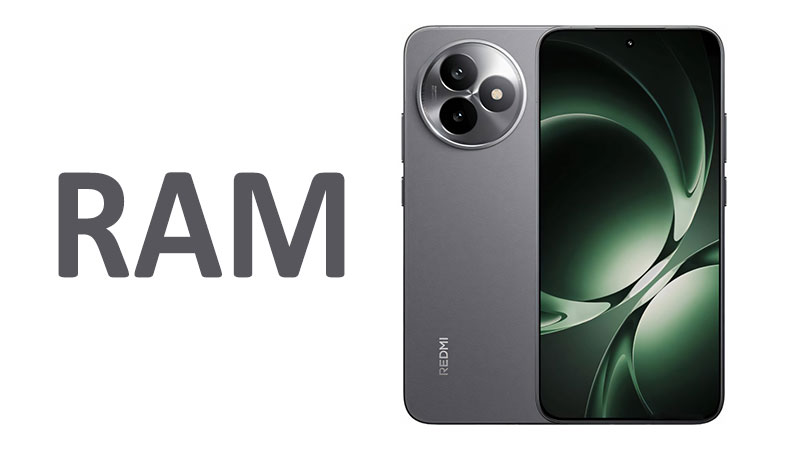The vivo X300 Pro RAM capacity is a foundational pillar of its flagship performance profile. This critical component determines the device’s speed and multitasking efficiency. The X300 Pro is offered in two primary configurations: 12 GB and 16 GB of RAM. These options cater to different levels of power users. Random Access Memory, or RAM, is essential for handling multiple apps simultaneously. It allows the operating system to switch between tasks instantly. We will thoroughly examine what these capacities mean for the user. This analysis covers daily performance, intensive gaming, and future-proofing the device.
The Core Capacity Options: 12 GB and 16 GB Explained
The X300 Pro offers consumers a choice between two high-end memory pools. The 12 GB RAM variant represents the baseline for premium performance. It is sufficient for 99% of current mobile use cases. This capacity easily handles high-resolution media editing and demanding games. Most users will find 12 GB entirely adequate for their needs.
The 16 GB RAM option caters to the extreme power user segment. This is the top-tier memory configuration available for the device. It is designed for unparalleled multitasking stability. This capacity is future-proofing the phone against more demanding software. It provides an extra layer of buffer for memory-intensive operations. Examples include heavy background processes or virtual machine emulation.
Both configurations utilize the latest generation of mobile RAM technology. This is likely LPDDR5X or LPDDR6. This technology ensures maximum data transfer speeds and efficiency. High speed is just as crucial as high capacity. Fast RAM allows the processor to retrieve data instantly. This minimizes latency and improves the overall responsiveness of the operating system.
Specialized Comparison: Capacity vs. Speed
It is important to understand the role of both capacity and speed. Capacity (12 GB or 16 GB) dictates how many apps can be open concurrently. Speed (LPDDR generation) dictates how quickly the data moves in and out of the memory. The X300 Pro combines high capacity with high speed. This results in superior overall performance.
Older flagships might have 8 GB of slower LPDDR4X RAM. They cannot compete with the X300 Pro’s memory performance. The combination of 12 GB capacity and the latest speed standard is highly competitive. This ensures the phone’s memory is not a bottleneck for the high-end processor. The design aims for maximum system throughput.
Pros and Cons of 12 GB RAM
The primary pro of the 12 GB option is the lower cost. This variant provides outstanding performance at a more accessible price point. It still offers true flagship multitasking capabilities. The power consumption is also marginally lower than the 16 GB model. This can lead to a slightly extended battery life.
The main con is the potential for less future-proofing. As operating systems evolve, their memory demands increase. In three to four years, 12 GB might start to feel constrained. Users who keep phones for maximum duration should consider this. Very intense video rendering tasks may benefit from the larger memory pool.
Multitasking Mastery: App Retention and Switching
RAM capacity directly impacts the phone’s multitasking behavior. When you switch between apps, the previous app remains open in RAM. If the RAM is full, the system must close the oldest app. This requires reloading the app when you return to it. This reloading process introduces significant delays.
The 12 GB X300 Pro can comfortably hold over a dozen complex apps in memory. These include heavy social media platforms and demanding games. App switching is virtually instantaneous and seamless. The user never experiences the frustration of app reloading. This results in a fluid and professional workflow.
The 16 GB option extends this capability even further. It allows for superior app retention, holding several more memory-hungry applications. Users who frequently jump between professional apps will appreciate this. Developers testing multiple heavy programs concurrently will also benefit. The extra 4 GB is a dedicated performance buffer.
Specialized Comparison: OriginOS/Funtouch Optimization
The performance of the RAM is heavily influenced by vivo’s operating system. The international Funtouch OS and Chinese OriginOS likely include RAM optimization features. These features use software to manage memory more intelligently. They prioritize memory for actively used applications. This ensures system resources are never wasted.
Features like Virtual RAM or Extended RAM are also common. These use a portion of the faster internal storage as temporary, slower RAM. While useful, this technique is not a true replacement for physical RAM. The X300 Pro’s generous physical 12 GB or 16 GB capacity minimizes the need for this feature. This keeps the phone’s performance purely hardware-driven.
Buyer’s Consideration: Your Usage Pattern
A reader should carefully assess their typical usage pattern. If you usually use four or five apps at a time, 12 GB is overkill. If you regularly open twenty different tabs and switch between five high-end games, consider 16 GB. The 16 GB variant is primarily for extreme enthusiasts and content creators. Most casual users will not perceive a difference in daily operation.
Gaming Performance and RAM Allocation
Gaming places specific and sustained demands on the phone’s memory. Modern mobile games require several gigabytes of RAM for smooth operation. This includes holding textures, level data, and game state information. The X300 Pro’s ample RAM ensures games are never throttled by memory limitations. This is critical for maintaining high frame rates.
A low-RAM phone forces the system to swap data constantly. This swapping can introduce noticeable stutters and frame rate drops. The 12 GB and 16 GB capacities eliminate this issue entirely. This guarantees a smooth, uninterrupted gaming experience. The system can keep the game fully loaded while still running background communication apps.
The 16 GB model offers a unique benefit for professional mobile gamers. It provides a larger buffer for running game recording software simultaneously. Streaming platforms and voice chat services also require constant memory access. The extra 4 GB ensures these companion apps do not interrupt the core gaming process. This maintains peak performance at all times.
Specialized Comparison: PC Gaming Convergence
The memory specifications of the X300 Pro rival those of many modern gaming PCs. Many entry-level gaming desktops still ship with 8 GB or 16 GB of RAM. The X300 Pro’s top 16 GB option closes the gap significantly. This demonstrates the immense power packed into this mobile device. This level of memory is essential for running console-quality games efficiently.
Competitor phones often reserve 16 GB for their most expensive, specialized gaming versions. Vivo offers this capacity in its standard Pro flagship. This emphasizes the X300 Pro’s commitment to all-around high performance. This is a clear marketing advantage in the competitive flagship space. The memory ensures a competitive gaming edge.
Pros and Cons in Gaming
The most important pro is the complete elimination of in-game stutters due to memory swapping. The ample RAM ensures lightning-fast loading times for games. It allows for seamless transitions between the game and the home screen. This provides a truly uninterrupted mobile gaming session.
There are almost no cons regarding the RAM itself for gaming. The memory performance is exceptionally high. The only possible drawback is the cost of the 16 GB version. Most mobile games will perform identically on both the 12 GB and 16 GB models today. The benefit of 16 GB is mostly for future titles.
RAM Technology: LPDDR5X and Beyond
The raw capacity is only one part of the story. The type and speed of the RAM are equally vital for performance. The X300 Pro uses the latest generation LPDDR technology. This stands for Low Power Double Data Rate RAM. LPDDR memory is designed specifically for mobile devices. It balances extreme speed with minimal power consumption.
LPDDR5X or the newer LPDDR6 is likely integrated into the X300 Pro. This standard offers massive improvements in bandwidth over older generations. Data can move between the CPU and the memory much faster than before. This speed minimizes processing bottlenecks. This allows the processor to work at its maximum potential.
Improved efficiency also means better thermal management. Faster, more efficient memory spends less time active for the same task. This generates less heat within the phone’s chassis. Reduced heat contributes to sustained peak performance. This is crucial during long, intensive gaming or video editing sessions. The memory technology is a quiet but critical performance factor.
Specialized Comparison: Efficiency Gains
Comparing LPDDR5X to LPDDR4X shows enormous power efficiency gains. LPDDR5X requires significantly less voltage for operation. This directly translates to lower power draw from the battery. The faster speed means the memory can complete tasks quicker and enter low-power sleep mode faster. This boosts overall battery life.
Many mid-range devices still use older LPDDR4X memory. Their systems consume more power and suffer from slower data retrieval. The X300 Pro’s latest RAM technology is a key differentiator. It is one of the invisible upgrades that defines a true flagship. This technological advantage guarantees superior efficiency.
Buyer’s Consideration: Long-Term Relevance
Buyers should understand that RAM technology is just as important as the quantity. The use of a cutting-edge LPDDR standard ensures long-term relevance. This means the phone will feel fast and responsive for many years. Older RAM technology ages faster than the processor itself. The X300 Pro avoids this common obsolescence issue effectively.
RAM and Operating System Optimization
Vivo’s custom operating system, whether Funtouch 16 or OriginOS 6, deeply integrates with the RAM. These operating systems include proprietary algorithms for memory management. The system learns the user’s habits and preemptively loads essential apps. This technique anticipates the user’s next move. It minimizes perceived load times to zero.
The OS reserves a portion of the RAM for critical system services. This ensures that the base operation of the phone is always smooth. The generous 12 GB or 16 GB capacity means this reservation does not impact user-available memory. The user always has sufficient RAM remaining for their personal apps.
RAM fragmentation is a common issue that the OS must manage. This occurs when memory becomes disorganized over time. Vivo’s software includes advanced garbage collection routines. These processes run constantly in the background. They keep the memory clean and highly efficient. This ensures the phone’s performance remains optimal over months of use.
Specialized Comparison: Software Synergy
Vivo’s software stack is designed to leverage the large RAM pools. This synergy often provides better real-world performance than stock Android. Stock Android systems rely on basic memory management techniques. Vivo’s customizations allow the system to be more aggressive with pre-loading. This results in faster app switching and a more dynamic user experience.
Competitors with similar RAM may not have this deep software optimization. The vivo X300 Pro combines powerful hardware with intelligent software. This provides a tangible advantage in daily speed and responsiveness. The OS truly unlocks the potential of the 16 GB memory module. The system works efficiently and intuitively.
Pros and Cons of Deep OS Integration
The primary pro is the incredibly fluid user experience. App loading appears instantaneous, and the home screen is always responsive. The deep integration ensures system stability even under heavy load. The OS knows how to utilize the massive RAM capacity effectively.
A potential con is the occasional over-optimization. Sometimes the OS might incorrectly predict which app to keep open. This can lead to a slight delay if the prediction is wrong. However, these instances are rare and usually quickly corrected by the learning algorithm. The benefits of the OS far outweigh these minor drawbacks.
Future-Proofing: Is 16 GB Necessary?
The question of future-proofing is central to the 16 GB RAM decision. For the next two to three years, 12 GB will likely remain the standard for flagship performance. However, mobile technology is advancing rapidly. Operating systems are becoming more complex. They support more advanced background features and services.
Choosing 16 GB is a strategic investment in the phone’s longevity. It provides an extra buffer against unforeseen memory demands. This is especially true if you plan to use the phone for four years or more. New AI features often require dedicated, substantial memory allocation. This trend is likely to continue growing exponentially.
The 16 GB model is also ideal for developers and beta testers. These users often run experimental software with unoptimized code. The larger memory pool provides necessary stability for this demanding use. It ensures the phone remains highly functional regardless of the software load. It minimizes the need for premature device upgrades.
Specialized Comparison: Longevity
A comparison of longevity suggests the 16 GB model will retain peak performance longer. Older 8 GB phones are already showing signs of aging due to modern OS requirements. The jump from 12 GB to 16 GB offers the greatest possible headroom. This small investment pays dividends in years three and four of the phone’s life cycle.
Competitors often charge a huge premium for the jump to 16 GB. Vivo’s pricing structure for the X300 Pro makes this upgrade highly attractive. It is a reasonable cost for guaranteeing maximum lifespan. This makes the 16 GB option a smarter long-term purchase decision.
Important Buyer Knowledge: The Tipping Point
Buyers must acknowledge the law of diminishing returns with memory. The performance difference between 12 GB and 16 GB is minimal today. The 16 GB capacity offers insurance, not immediate speed gains. Only purchase the 16 GB model if you are committed to the phone’s maximum lifespan. Alternatively, purchase it if your current workload requires running many apps simultaneously. The 12 GB variant is the better value choice for most consumers.
Conclusion: An Informed Decision on the X300 Pro RAM
The vivo X300 Pro RAM options are among the most capable in the mobile industry. The choice between 12 GB and 16 GB depends on individual user priorities. Both configurations utilize the latest, highly efficient LPDDR technology. This ensures extreme speed and excellent power management.
The 12 GB model provides truly excellent flagship performance. It handles heavy gaming, complex multitasking, and demanding apps with ease. This is the optimal value choice for the vast majority of users. It offers speed and efficiency at a lower purchase price point.
The 16 GB model is the clear winner for longevity and extreme users. It minimizes app reloading and maximizes future-proofing against evolving software. This option provides the absolute largest memory buffer available. It is ideal for mobile developers, professional gamers, and users who keep their phones for many years. Choose the 12 GB for value and the 16 GB for zero compromise and maximum lifespan.
Frequently Asked Questions (FAQ)
1. Does the X300 Pro offer more than one RAM option?
Yes, the vivo X300 Pro is available in two main configurations, offering 12 GB and 16 GB of RAM.
2. Is 12 GB of RAM enough for heavy mobile gaming?
Yes, 12 GB is more than sufficient for running all current high-end mobile games smoothly without stutters.
3. What is the benefit of choosing the 16 GB version?
The 16 GB version offers superior app retention for heavy multitasking and better overall future-proofing for the device.
4. What type of RAM technology does the X300 Pro use?
It utilizes the latest high-speed, low-power standard, likely LPDDR5X or LPDDR6, which ensures maximum data efficiency.
5. Will I notice the difference between 12 GB and 16 GB in daily use?
Most standard users will not notice a difference. Only extreme power users and those testing many apps will observe a benefit.



